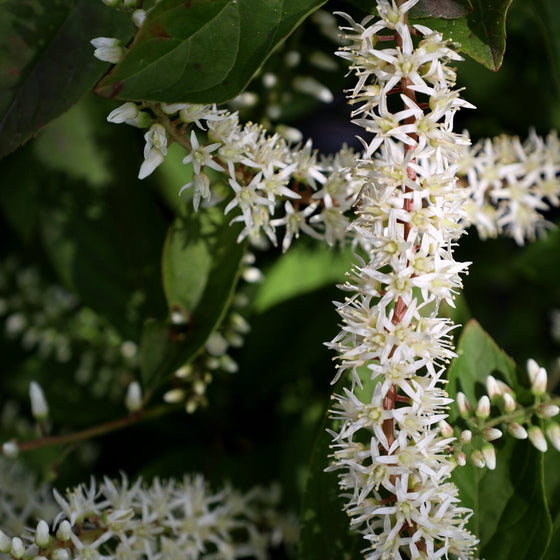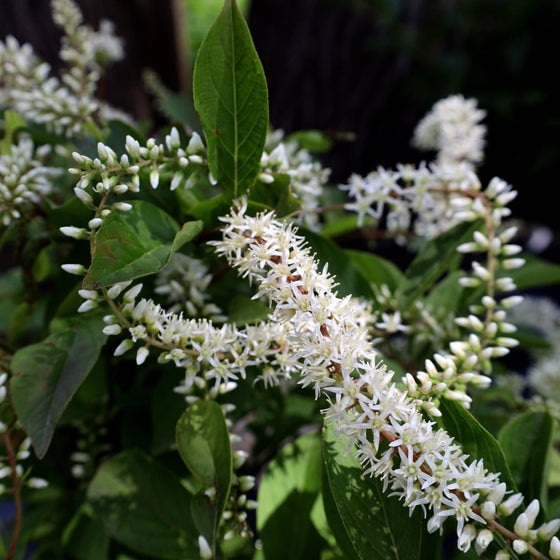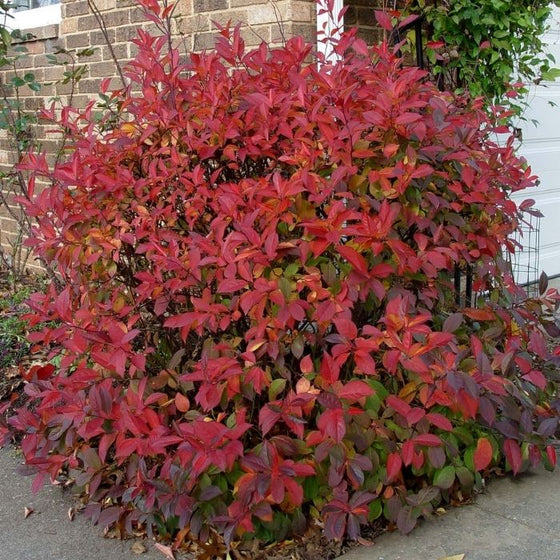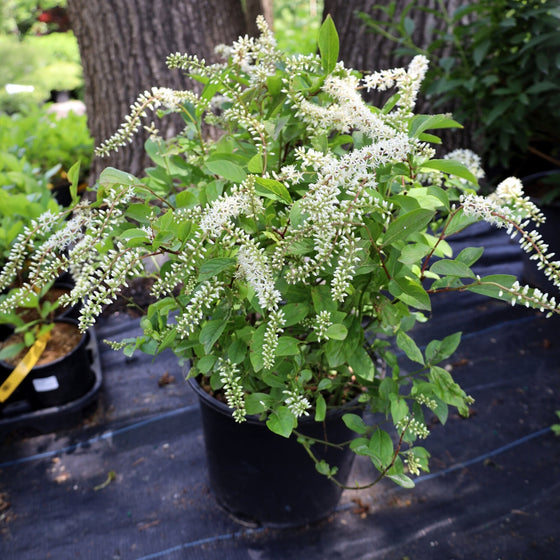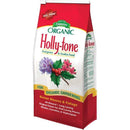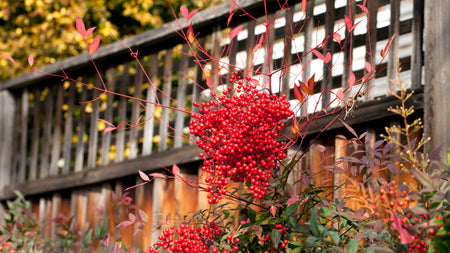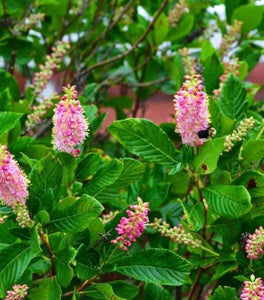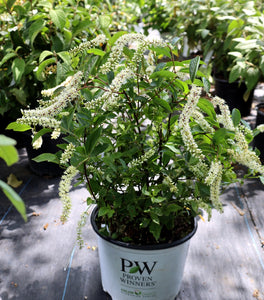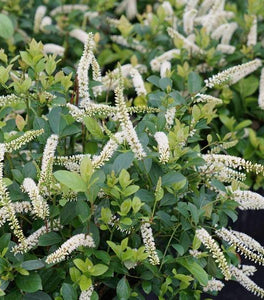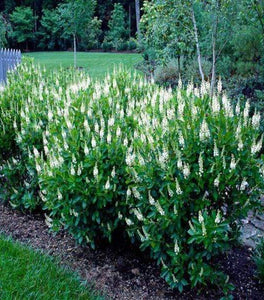
Images Depict Mature Plants
Itea Henry's Garnet Shrubs for Sale Online
Itea 'Henry's Garnet', also known as Henry's Garnet Sweetspire, is a versatile, deciduous shrub that offers year-round beauty and interest. This stunning shrub is mainly known for its fragrant, cascading white flower spikes that bloom in late spring to early summer, attracting pollinators like bees and butterflies. Growing to a height and spread of 3 to 4 feet, it forms a dense, rounded shape, making it perfect for borders, woodland gardens, or mass plantings. Henry's Garnet Sweetspire transforms in the fall, showcasing vibrant, deep red to burgundy foliage that lasts well into the winter, providing striking seasonal color.
Itea 'Henry's Garnet' thrives in a variety of conditions, from full sun to partial shade, and it tolerates both wet and dry soils, making it ideal for rain gardens or planting near water features. This adaptability makes it a reliable choice for various garden environments. Hardy in USDA zones 5-9, this shrub is easy to care for, requiring minimal maintenance once established. Its naturally compact growth habit also makes it suitable for foundation plantings, mixed borders, or as an accent shrub, providing interest in all seasons.
In addition to its visual appeal, Henry's Garnet Sweetspire is also deer-resistant and pest-resistant, making it a low-maintenance option for gardens where wildlife pressure may be a concern. Its ability to thrive in wet conditions and tolerate occasional drought makes it perfect for low-maintenance landscapes that require beauty and functionality. Whether used as a specimen plant or as part of a larger landscape design, Itea 'Henry's Garnet' adds year-round beauty and ecological value to any garden.
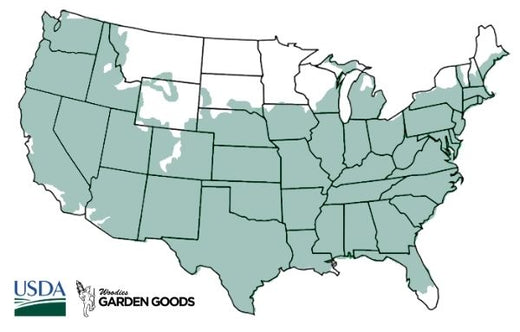
| Hardiness Zone: | 5-9 |
|---|---|
| Mature Height: | 3 to 4 feet |
| Mature width: | 3 to 4 feet |
| Classification: | Broad Leaved deciduous shrub, Summer flowering |
| Sunlight: | Full Sun to Part Shade |
| Habit: | Upright, great for naturalizing |
| Foliage: | Dark Green |
| Flower Color: | Fragrant pure white. 2 to 3 inches long. |
| Pruning Season: | Prune in summer after flowering. |
| Soil Condition: | Any well drained slightly acidic soil |
| Water Require: | Water well until established. |
| Uses: | Tolerates moist soil and partial shade or full sun. Full sun brings out the best fall color. Will adapt to drier sites. Spreads by suckers; remove them as they appear if you don’t want a colony. |
How to Care for Itea Henry's Garnet
Be sure to read our planting instructions to ensure a healthy and happy plant for years to come!
How do I Plant an Itea Henry's Garnet Shrub?
To plant an Itea Henry's Garnet shrub, select a location with full sun to partial shade and well-drained soil. Although this shrub is highly adaptable, it performs best in moist, fertile soil, making it ideal for rain gardens or areas near water features. Dig a hole twice as wide and as deep as the root ball to give the roots plenty of room to spread. Place the shrub in the hole, ensuring the top of the root ball is level with or slightly above the surrounding soil. Backfill the hole with the original soil, pressing down gently to eliminate air pockets, and water thoroughly to help the roots establish. For optimal growth, space multiple Itea Henry's Garnet shrubs about 3 to 4 feet apart, allowing room for their mature size. After planting, apply a 2-3 inch layer of mulch around the base of the plant to retain moisture and suppress weeds, but be sure to keep the mulch a few inches away from the trunk to prevent rot. Water regularly during the first growing season to promote healthy root development. Once established, Henry's Garnet is relatively low-maintenance and can tolerate occasional drought, making it a versatile and easy-care option for both woodland gardens and sunny borders.
How do I water Itea Henry's Garnet Shrubs?
To properly water Itea Henry's Garnet shrubs, it's essential to keep the soil consistently moist, especially during the first growing season. Water deeply at the base of the plant once or twice a week, depending on weather conditions, to help establish a strong root system. If the shrub is planted in a rain garden or near a water feature, natural moisture may be sufficient, but monitor the soil to ensure it doesn’t dry out completely. Avoid shallow watering, as this can prevent the roots from growing deep and strong. Always check the soil—if the top few inches feel dry, it’s time to water. Once established, Itea Henry's Garnet is relatively drought-tolerant but will perform best with consistent watering, particularly during hot, dry periods. Mature shrubs typically require less frequent watering and can thrive with natural rainfall, but supplemental watering may be needed during prolonged dry spells. Be sure to mulch around the base of the plant to retain soil moisture and reduce evaporation. Proper watering ensures that your Itea Henry's Garnet shrub stays healthy, producing abundant fragrant blooms in summer and vibrant red foliage in fall.
How do I Fertilize Itea Henry's Garnet Shrubs?
To fertilize Itea Henry's Garnet shrubs, apply a balanced, slow-release fertilizer, such as a 10-10-10 formula, in early spring before new growth begins. Spread the fertilizer evenly around the base of the shrub, avoiding direct contact with the stems, to prevent root burn. Water thoroughly after applying the fertilizer to help the nutrients absorb into the soil and reach the roots. For established plants, fertilizing once a year in early spring is typically sufficient to support healthy growth, vibrant blooms, and rich fall foliage. For gardeners who prefer organic methods, you can also use compost or well-rotted manure as an alternative fertilizer. Simply apply a 2-3 inch layer of compost around the base of the plant in early spring, working it into the topsoil to promote slow nutrient release. Be careful not to over-fertilize, as Itea Henry's Garnet shrubs do well in average soils and too much fertilizer can lead to excessive foliage growth at the expense of flowers. Proper fertilization will ensure your shrub thrives, producing fragrant white blooms in summer and its signature deep red fall color.

How and When Should I Prune Itea Henry's Garnet Shrubs?
To prune Itea Henry's Garnet shrubs, the best time is in late winter or early spring, just before new growth begins. This timing allows you to remove any dead or damaged branches and shape the shrub without impacting its blooming season. Start by cutting back any branches that are crossing, broken, or showing signs of disease. You can also lightly thin the shrub to improve air circulation, which helps reduce the risk of fungal issues. Use sharp, clean pruning shears to make clean cuts just above a leaf node or bud to encourage healthy new growth. If you're looking to control the size of your Itea Henry's Garnet shrub, you can perform more substantial pruning immediately after it finishes blooming in late spring or early summer. This ensures you won't remove the upcoming season’s flower buds. Trim back the outer branches to maintain a compact shape, but avoid heavy pruning, as Henry's Garnet thrives with its natural, arching form. Regular pruning promotes dense growth and keeps the shrub healthy, ensuring an abundance of fragrant summer blooms and vibrant fall foliage.

